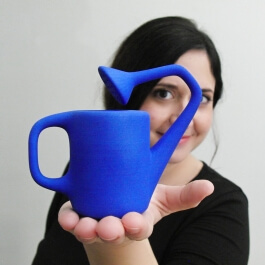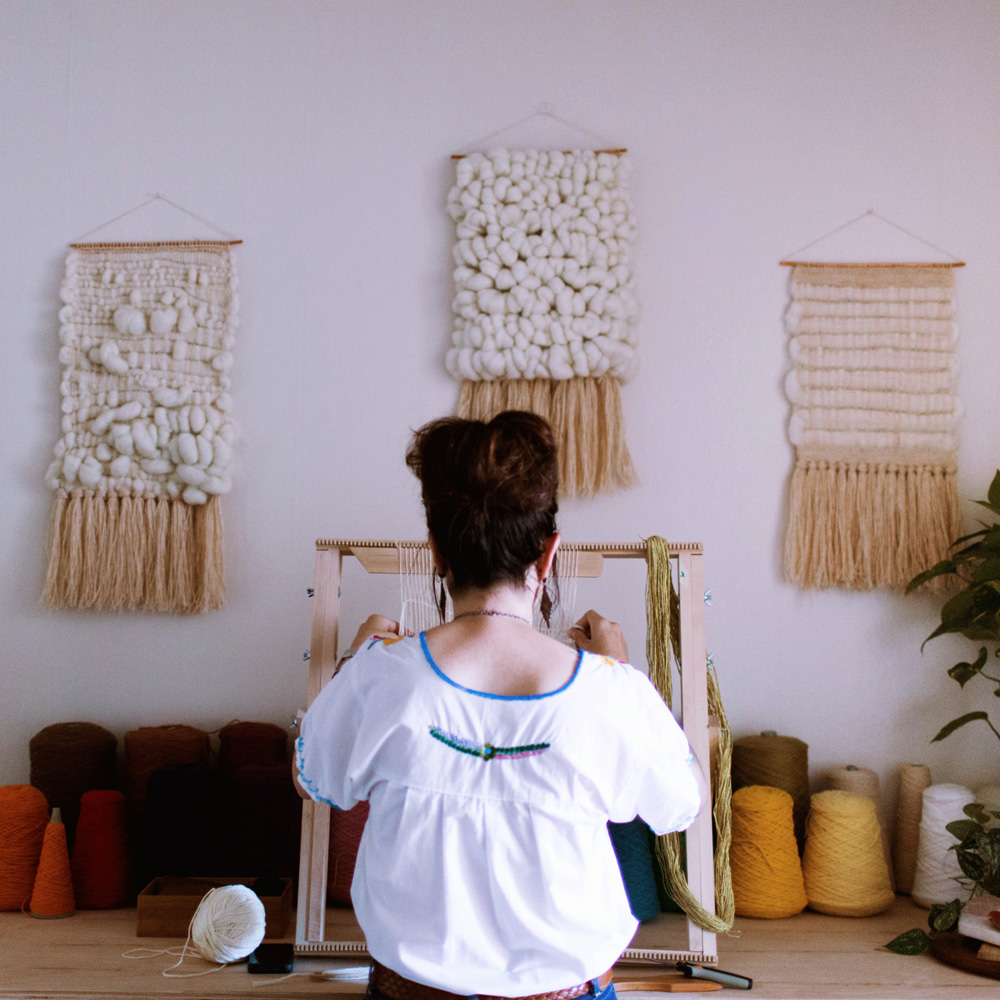Lifestyle
Revisited, Revived: Traditional Crafts In Contemporary Designs
IntroCheap knockoffs from China, a lack of clients, alternative career paths: there are plenty of reasons why age-old artisanry is under threat of extinction these days. Luckily, scores of initiatives around the world are attempting to revive traditional crafts and rekindle generations of artistic mastery. These marvellous designs from around the world happily make use of time-honoured crafts, sometimes enhanced with digital techniques – and always without any of the stodgy nostalgia that traditional crafts are so often shrouded in.
0/16
Lifestyle
Revisited, Revived: Traditional Crafts In Contemporary Designs.
KanthaIndia/UK – Kantha
London brand Tiipoi have translated the traditional hand-embroidery technique kantha from West Bengal, India into a line of textiles, using an industrial quilting machine. Founder Spandana Gopal notes that “crafts are often approached from an angle that is quite patronising, or addressed from a nostalgic/empowerment point of view, which is very often the case in countries like India.” With their “Modern Kantha” and other home designs, Tiipoi address the complex question of how a craft can evolve – taking a modern approach, with a nod to the past, and always on a human scale.1/16
Lifestyle
Revisited, Revived: Traditional Crafts In Contemporary Designs.
ScagliolaCanada/Italy – Scagliola
Since Roman times, sculpture artisans have worked with scagliola, a composite used to make simple plaster resemble far more expensive materials such as marble or semi-precious stone. This “poor man’s marble” became popular in the 17th century and was mostly used to adorn cathedrals and other buildings. In her scagliola-inspired collection, artist Deborah Moss of Toronto-based Moss & Lam uses a mixture of plaster, pigments, water and glue, hand-casting it in rubber moulds which are left to solidify for 24 hours, then cured for a few more weeks. Only after much sanding and buffing do the marble-like veins reveal themselves. The result is three striking, statuesque tables in a collection named W1, after central London’s postal code. [Photo: Rocky Choi]2/16
Lifestyle
Revisited, Revived: Traditional Crafts In Contemporary Designs.
BambooJapan – Bamboo
Monozukuri, or “making things”, is at the heart of Japanese culture, with many traditional craft techniques often taking years to master. As part of the non-profit Japan Creative Project, in which traditions are reinterpreted for today’s society, Munich-based designer Stefan Diez visited a traditional bamboo manufacturer and surrounding forests in Taketora. His research resulted in these durable – and extremely robust – tabletop trestles and a bench.3/16
Lifestyle
Revisited, Revived: Traditional Crafts In Contemporary Designs.
TaiwanTaiwan – Lacquerware
An ongoing project of the National Taiwan Craft Research and Development Institute, A New Layer brings together international designers and local artisans to transform traditional Taiwanese products into contemporary design objects. The designers were able to travel through the country, visiting artisans’ workshops and historical sites. Swiss-French designer Julie Richoz created a series of tableware objects in collaboration with lacquer artisan Chin-Mei Huang, inspired by a centuries-old Chinese jade object she discovered at the Taiwan National Palace Museum.4/16
Lifestyle
Revisited, Revived: Traditional Crafts In Contemporary Designs.
NetherlandsNetherlands – Delft Blue
Inspired by the concept of white holes in the universe, Dutch designer Jacob de Baan created the lighting series Blu Halo for Heinen Delfts Blauw. The Delft Blue version is meticulously hand-painted with flowers and petals by a master painter – just like its counterparts from the 17th century, when this style of ceramics manufacturing first flourished as an affordable alternative to Chinese porcelain. [Photo: Jonas Briels]5/16
Lifestyle
Revisited, Revived: Traditional Crafts In Contemporary Designs.
Swaziland/South AfricaSwaziland/South Africa – Woven Artefacts
This Swaziland brand may be named “Gone Rural”, but their sophisticated designs would fit just as well in an urban loft. What started out in the ‘70s as a small crafts store is now a network of hundreds of Swazi craftswomen who create intricate woven baskets and objects using materials such as Lutindzi grass, sisal fibre and clay. The brand often collaborates with designers, such as the Johannesburg-based duo Dokter and Misses, whose clean, graphic aesthetic – mixed with the handmade nature of Gone Rural’s woven creations – makes for a unique modular screen.6/16
Lifestyle
Revisited, Revived: Traditional Crafts In Contemporary Designs.
SwillUnited Kingdom – Swill
London-based designer Sebastian Cox teamed with Lorna Singleton, one of the UK’s few experts on swilling, to create a furniture collection for online artisan shop The New Craftsmen. Swilling is a traditional woodworking technique in which oak is boiled, cleft into paper-thin strips, and then soaked. The process results in a strong, bendable material, almost like rope, which can be woven into a lattice. Together with the use of coppiced wood, Cox and Singleton’s Swill furniture has a textural, minimalist appearance. [Photo: Gareth Hacker/The New Craftsmen]7/16
Lifestyle
Revisited, Revived: Traditional Crafts In Contemporary Designs.
Barro NegroMexico – Barro Negro
Back in 2009, designer David Pompa travelled to Oaxaca, Mexico, where he came across Barro Negro, a special local clay characterised by its black colour. The polishing and firing of this material requires years of experience, dedication and patience. Nevertheless, Pompa started experimenting with it in his designs, and now he and his studio solely create objects that have firm roots in Mexican culture, reviving age-old artisanal traditions and improving the livelihoods of local craftspeople.8/16
Lifestyle
Revisited, Revived: Traditional Crafts In Contemporary Designs.
ChileChile – Wicker
About 150 kilometres from Santiago in Chimbarongo, the Salix plant, a type of willow, grows in abundance; local artisans have been making woven artifacts with it for ages. Made in MIMBRE, a brand founded by designers and architects under the name The Andes House, transforms these crafts into modern lighting and furniture objects, while providing sustainable work for the community. Swedish architecture studio Claesson Koivisto Rune created these lamps, named “Medusa, Chinita, Bellota”, in a special collaboration.9/16
Lifestyle
Revisited, Revived: Traditional Crafts In Contemporary Designs.
MoroccoUSA/Morocco – Cement Tiles
Two Americans who became smitten with Morocco and Moroccan culture, Caitlin and Samuel Dowe-Sandes founded Popham Design in 2007. The company creates a vast range of contemporary cement tiles, many of them inspired by the patterns and colours that can be found throughout the country. They are handmade in Marrakech by a team of tile artisans, most with more than 20 years of experience. The company’s website even features a cool tile simulator, allowing you to play around with the many shapes, patterns and colours to create a fantastic bespoke design for your home.10/16
Lifestyle
Revisited, Revived: Traditional Crafts In Contemporary Designs.
KilimEgypt – Kilim
In Fuwa, a town on the lush Nile Delta, people have been weaving colourful woolen carpets, called kilim, for hundreds of years. When Ibrahim Shams and his wife Noha El Taher were looking for a rug for their baby daughter, they learned the kilim industry was struggling: not only due to pressure caused by mass-produced Chinese products, but also because the number of tourists to Egypt had plummeted. The discovery led them to create Kiliim, where updated designs matched with traditional craftsmanship are putting this authentic tapestry craft back on the map.11/16
Lifestyle
Revisited, Revived: Traditional Crafts In Contemporary Designs.
DurrmuAustralia – Durrmu Designs
Sasha Titchkosky and Russel Koskela started the brand Koskela as a celebration of Australia’s indigenous culture; their collaborations with Aboriginal art centres have made it possible for local craftspeople to receive a good income while also preserving their culture. This fabric range is based on the intricate lineair paintings by Ngan’gikurunggurr artist Regina Wilson, whose paintings are, in turn, based on traditional weaving patterns. “For the Ngan’gikurunggurr, Durrmu means ‘designs’ – designs that can be anywhere. We used to do drawing on the ground, and we do them on the body, too,” Wilson said about the collaboration.12/16
Lifestyle
Revisited, Revived: Traditional Crafts In Contemporary Designs.
UK/ChinaUK/China – Yixing Ceramics
While visiting Yixing, in China’s Yangtze River Delta, designer Christopher Jenner fell in love with the city’s pottery, made according to a tradition that dates back to the 9th century using zisha clay, which is rich in mineral content and lends the ceramics a deep orange-red colour. Tea connoisseurs also say it gives tea brewed in pots made of this material an enhanced flavour. Jenner and his team in London collaborated with local craftspeople to create a contemporary tea set and other tableware, displayed in “The Tea House”, an installation constructed in ash wood and presented at Milan’s Salone del Mobile in 2017. [Photo: Michael Franke]13/16
Lifestyle
Revisited, Revived: Traditional Crafts In Contemporary Designs.
ShakerUSA – Shaker Furniture
The austere furniture designed by the 19th-century Shakers, or “the first minimalists”, is more relevant now than ever. The religious sect were known for crafting simple, no-frills wooden furniture pieces, often using concealed joinery and tapered legs. In 2016, a group of designers presented a collective exhibition with their re-interpretations of Shaker design, alongside original artefacts that served as inspiration. Designer Tom Bonamici created this Chandelier, inspired by the adjustable candle holders, but with exposed joinery and spliced cord. It uses a single dovetail to firmly lock the pieces together.14/16
Lifestyle
Revisited, Revived: Traditional Crafts In Contemporary Designs.
BidriIndia – Bidri
Ira Studio creates interior products with traditional Indian craft practices that are otherwise considered anachronistic, such as this Bidri tray, based on a craft rooted in early 14th-century Bidar, India. The tray is made of an alloy of zinc and copper, rendered matte black from being dipped into a boiling slurry of a special mud found in the region. Simple linear patterns are engraved with fine chisels and then inlaid with silver via a technique called Tarkashi for an elegant finish.15/16
Lifestyle
Revisited, Revived: Traditional Crafts In Contemporary Designs.
Slide Nr 1816/16





















